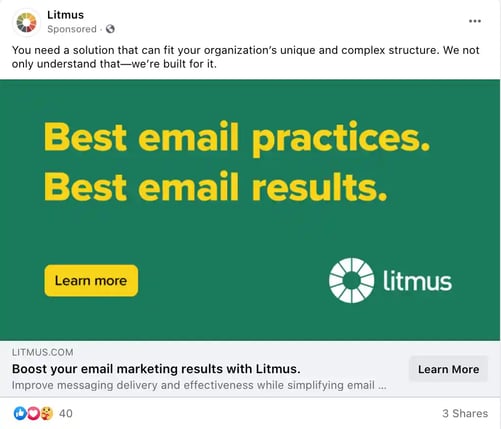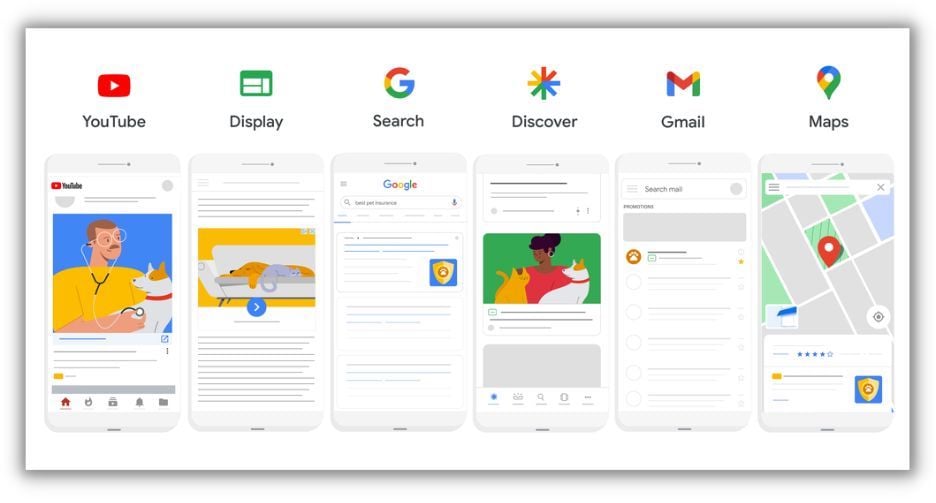Google vs Meta Marketing: Which One is Right for Your Business?

Is your brand struggling with organic growth? Although organic growth delivers long-term and sustainable results, it takes time to capture the user's attention. That's where paid advertising can help!
Paid advertising gives complete control over user traffic and works on a pay-per-click or pay-per-impression model. Besides, PPC visitors convert 50% more than organic traffic. Meta and Google are the two leading paid advertising spaces online. So, which ad platform is best for your business?
Since each platform has a specific purpose, it is important to understand its strengths and weaknesses. This blog compares Google and Meta Marketing based on a few essential parameters. That way, it will help you find the right match for your business.
Google Ads and Meta Marketing – How Do They Work?
Google Ads is the media giant's bid-based advertising platform. It helps to place ads on search engine result pages and Google partner sites. The platform allows users to create search-based ads, videos, and shopping ads. Among these ad types, search-based ads are the most common ads.
These ads are primarily based on keyword search, where the platform matches the keywords to the user's search intent. They work on a pay-per-click model, and the ads appear to the user based on Google's ads auction system.
Let's now focus on meta marketing meaning.
As of January 2024, the Meta market cap is $944.32 Billion, which makes it another huge advertising platform. Advertisers prefer Meta platforms for their massive reach and advanced targeting options. These ads appear on users' feeds and stories across Facebook and Instagram.
Facebook ads can reach over 1 billion viewers with its targeted campaigns. Hence, they are ideal for brands looking to grow their audience network and improve visibility. Meta offers different ad types like sponsored ads, images, videos and carousels.
The platform has different prospecting and retargeting options. Custom, saved, and lookalike audiences are the targeting options for creating an optimised campaign.
Comparing Google Ads and Meta Marketing
Here's a granular look at the core aspects of advertising and compare the two platforms.
Campaign Objectives
Determining your campaign objective is the first step to creating a campaign. What does your brand want to achieve with the campaign? Determine if you want to improve brand visibility, conversions, sales, or anything else.
Google Ads are perfect for an audience base with high purchase intent. Google Ads runs on search engines and shows up when a user searches for a specific product. For example, if a user searches for "face mask," Google shows your face mask ad in the search results.
On the other hand, Meta Ads are apt for customers in the buyer funnel's awareness stage. These ads help to target consumers who are exploring different purchasing options.

You can use both platforms at each stage of the buyer's journey. However, determining your objective takes your campaign in the right direction.
Ad Platforms and Placements
Advertisers prefer Google Ads, given its extensive reach. Google is the most visited website, processing 8.5 billion searches per day. Google Ads reach is estimated to be about 90% of users globally.
Google shows ads across various platforms such as Google Search, YouTube Ads, Gmail, and even Google partner websites. Moreover, its video campaigns allow brands to display their ads on YouTube or video partner sites.
Lastly, the Google display network includes a collection of websites that act as a platform for Google Ads.

Meta is one of the popular social media platforms. Meta's display network is called Meta Audience Network and works like Google's. The platform shows ads across Facebook, Instagram, Meta Audience Network and Messenger. Besides, the ads can also appear on WhatsApp, Facebook Marketplace and in-stream videos.
Meta marketing also allows linking your ads to a business page or a profile. So, when the user sees the ad, they can go through the social media business page to better grasp your services.

Tip: YouTube is the best platform for brand awareness. Instagram and Facebook are ideal for small and medium-sized businesses that aim for better customer acquisition costs.
The Creative
Creatives are the core aspect of Ads, and a compelling copy goes a long way in driving conversions. Google Ads allows us to create different ads like text, video, images and shopping. Moreover, the platform offers appealing features like reviews, mobile optimisation, site links and targeting.
Another USP of Google Ads is responsiveness. So, what do you mean by a responsive ad? It allows more scope for experimentation and allows 15 headlines and four descriptions in a copy.
In contrast, Meta Ads is better suited for industries such as fashion and food that demand visually appealing content. Given that visual ads are 43% more persuasive than text-based ones. The platform offers different ad types like images, video, instant experience, carousels, and collections. Choose your ad type based on your campaign's objective.
A Meta ad typically contains a headline, primary text, description and CTA. The primary text in Meta Ads is like the description in Google Ads. The instant experience feature renders a full-screen experience when someone clicks on the ads and highlights your brand, its products or services.
Targeting Options
Google and Meta broadly differ in their targeting options. With Google targeting, you have two options – keyword searches and audiences.
While targeting with keywords, you can choose either a broad, phrase or exact match type based on your product and user intent. The platform assigns a quality score for your ads based on their relevance to the search queries. Using meta tags in digital marketing helps to increase your ad relevance and rank higher on search engines.
Primarily, Google targeting is synonymous with keyword targeting. However, audience targeting is also an equally powerful strategy.
Here, you can target the audience based on the following segments-
-
Google's Audience Segments (demographics, interests, in-market trends, life events)
-
Data Segment or Remarketing (Website, App, YouTube)
-
Custom Segments
-
Combined segment and optimised targeting
Moving to Meta ads, it is popular for their advanced targeting. At the same time, Google primarily targets demographics, interests, life events, etc. Facebook takes it to a granular level with options like "lookalike audiences" and "custom audiences."
What is a lookalike audience? Facebook allows you to target new customers based on the characteristics of your existing customers. This increases the chances of conversions, and you don't have to start from scratch.
Budget and ROI
Understanding budget allocation is essential to maximise your return on ad spending. Google ads work on a pay-per-click model, meaning you pay only when a user clicks. Here, you can set budgets at the campaign level and not for ad sets.
On the other hand, Meta Ads offers both pay-per-click and pay-per-impression models. The advertisers have to pay per 1,000 impressions. Here, you can set budgets at the ad set –level. With the Advantage campaign budget, you can set a single budget for all the ad sets in a campaign. While Meta ads help you to set daily and lifetime budgets, Google Ads allows you to select only daily budgets.
Tip: Meta and Google Ads consider an average daily budget, not a maximum daily budget for ads.
Reporting
Measuring and optimising campaigns is essential to find the best strategy for conversions. Meta ads track your ad's performance at a campaign, ad set, or ad level. So, if you want to track how an ad set performs for different audiences, it is not possible with Meta Ads.
On the other hand, Google Ads provides comprehensive reporting. It creates reports for multiple audiences, keywords, and placements. This helps in making the required tweaks and optimising your future campaigns.
Final Thoughts
Meta and Google platforms are the best advertising spaces available in today's landscape. However, choosing the best among them depends on your industry, business needs, audience, and campaign objective. Google marketing is better for driving sales, whereas Meta marketing is for enhancing awareness or reaching a specific audience.
Meta Ads have a low CPC and high conversion rate. In contrast, Google Ads show a high click-through rate, high CPC and a lower conversion rate. However, Meta Ads takes time to show conversions, given you are targeting the audience to create brand awareness.
Experts also suggest using both approaches simultaneously for better learning insights and conversions. If you are confused about which ad platform works best for your brand, Growth Jockey is here to help. We can analyse your business needs and audience and suggest an advertising platform to increase conversions. To find the best advertising space for your brand, contact Growth Jockey today!
Frequently Asked Questions
1. Which platform is more suitable for product displays?
If you have a visually appealing offering, Meta ads are perfect to showcase them and capture your audience's attention. Users can also reshare your content, helping you broaden your reach. Additionally, you can stir conversation and buzz around your offerings by encouraging engagement.
2. What are smart campaigns?
Smart campaigns are ad campaigns specifically designed to help small businesses promote their offerings online. It allows advertisers to set their business goals and choose where they wish to advertise. Google then uses smart technology to deliver results tailored to your goals.
3. Can you run retargeting ads on Google?
Yes, using Google Ads remarketing, you can re-engage with potential leads by adding your app or website visitors to remarketing lists. Then, you can create an ad to target prospects on these lists.









